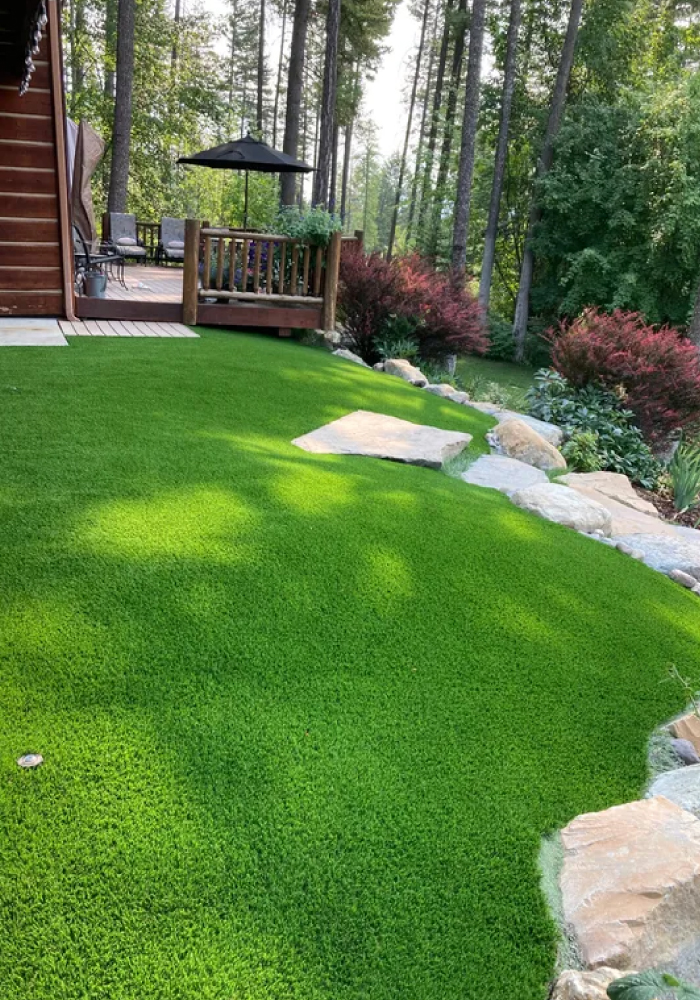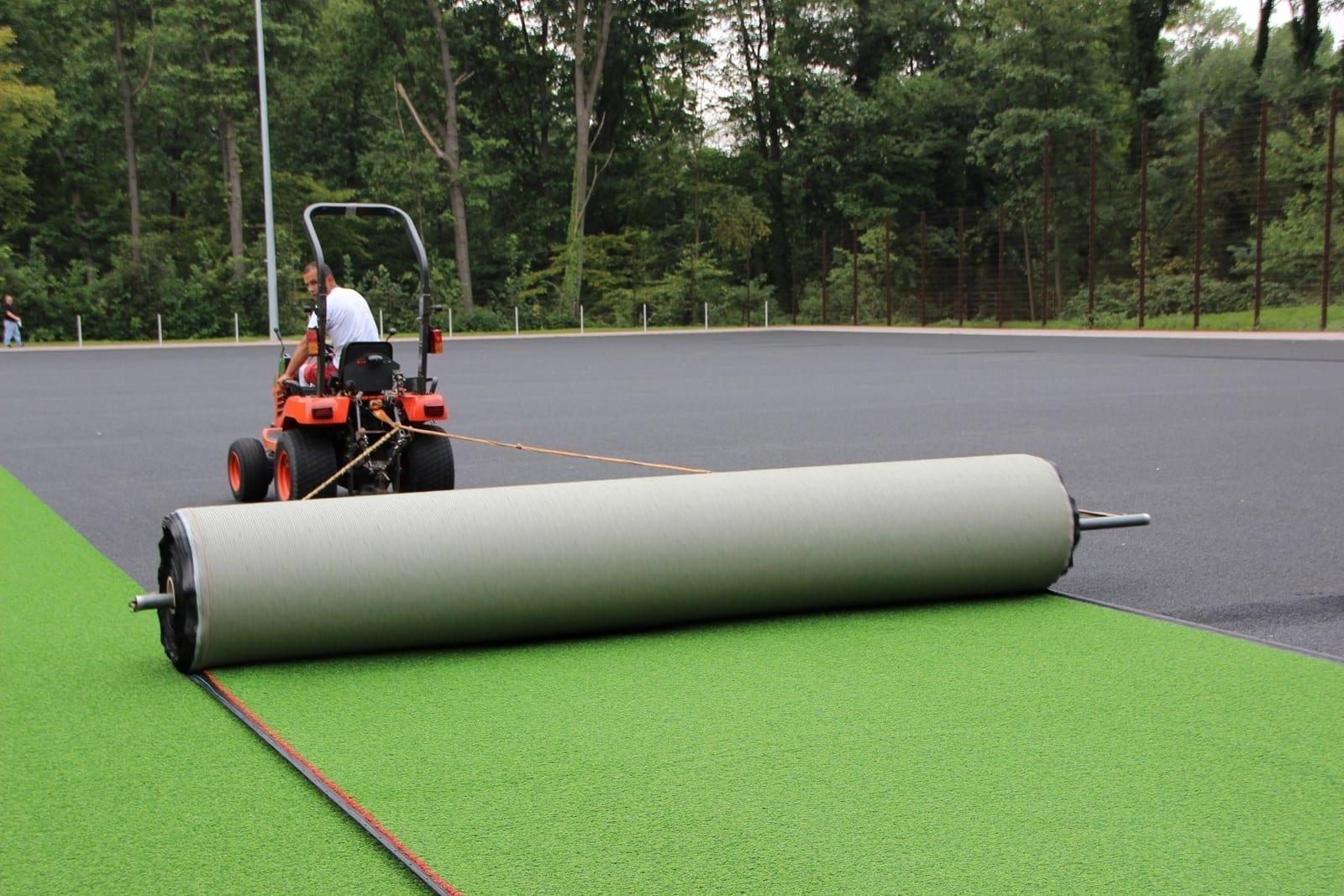Environmentally Safe Arizona Artificial Turf for a Always-Green Lush Green Lawn
Explore the Environmental Benefits of Opting for Synthetic Grass Solutions
The fostering of man-made grass remedies provides a compelling possibility to deal with pressing ecological obstacles. By substantially minimizing water usage and decreasing the application of dangerous chemicals, these alternatives not just advertise lasting landscaping but additionally shield local communities. Additionally, the reduced carbon footprint connected with reduced upkeep activities contributes to a much more sustainable strategy to land monitoring. The effects of these benefits extend beyond mere preservation initiatives, elevating concerns about their lasting impact on environment conservation and general eco-friendly equilibrium. Discovering these dimensions discloses a complicated interaction worth considering.
Water Conservation Conveniences
Among one of the most substantial benefits of synthetic grass is its capacity to save water. Typical turf lawns require substantial irrigation, especially in locations vulnerable to dry spell or water restrictions. In contrast, synthetic grass does not need watering, dramatically minimizing the general need for water sources. This attribute is specifically beneficial in arid regions where water shortage is a pushing problem.
By eliminating the demand for regular watering, synthetic grass contributes to sustainable landscape techniques and helps mitigate the ecological impact of extreme water intake. Moreover, the preservation of water extends to the decrease of drainage, which can result in dirt disintegration and waterway contamination.
In addition, the setup of artificial lawn permits house owners and towns to allocate water resources much more successfully, focusing on crucial usages such as alcohol consumption water and farming. The shift towards synthetic grass not just advertises accountable water use yet additionally lines up with wider environmental objectives intended at preserving all-natural resources.
As communities significantly focus on sustainability, the water preservation advantages of synthetic grass provide a compelling situation for its fostering in household and commercial landscape design jobs.
Minimized Chemical Use
The transition to synthetic grass dramatically decreases the reliance on chemical treatments frequently utilized in all-natural turf maintenance. Conventional grass administration normally includes the application of herbicides, fertilizers, and pesticides to advertise growth and control parasites. These chemicals can pose threats to human health, local wild animals, and the atmosphere, adding to soil and water contamination.
On the other hand, synthetic turf eliminates the demand for these dangerous compounds. Once installed, it calls for marginal maintenance, mainly including normal cleansing and irregular infill replenishment. This reduction in chemical usage not just benefits the immediate environment however likewise adds to wider eco-friendly security. By minimizing the launch of synthetic compounds into the ecological community, synthetic grass promotes much healthier soil and water supply.
In addition, the lack of chemical runoff associated with artificial turf installations aids protect regional waterways from air pollution, supporting marine life and keeping biodiversity. Turf installation phoenix az. As areas increasingly focus on sustainable techniques, selecting synthetic grass provides a practical remedy that lines up with ecological preservation goals. Through this change, homeowner can appreciate lush eco-friendly spaces without endangering ecological health, leading the method for an extra lasting future
Lower Carbon Impact

Furthermore, the setup of fabricated lawn can cause considerable water preservation. All-natural lawns call for considerable amounts of water for irrigation, which not only adds to the carbon impact associated with water removal and therapy but likewise pressures local water resources. In contrast, artificial turf requires minimal upkeep, needing no watering, thereby substantially minimizing water use and its associated power expenses.
Additionally, the durability of man-made turf contributes to its decreased carbon effect. With a life-span of up to 15 years or more, the demand for constant replacements is decreased, causing much less waste and reduced energy intake in manufacturing and getting rid of typical yard alternatives. Generally, man-made turf offers a lasting choice for eco mindful landscape design.
Environment Conservation
Habitat conservation is an essential factor to consider in the dispute over landscape design choices, especially when contrasting fabricated grass to natural lawn. Natural grass yards typically require extensive upkeep, consisting of the usage of herbicides, chemicals, and fertilizers, which can adversely influence neighborhood ecosystems. These chemicals can seep into the soil and waterways, browse around this site hurting indigenous plants and fauna and interrupting regional environments.
On the other hand, man-made turf presents a possibility to minimize the eco-friendly impact of landscaping. By choosing artificial grass, homeowners can lessen the interruption of all-natural habitats related to conventional yard care techniques. Synthetic grass gets rid of the demand for dangerous chemicals, consequently securing nearby wild animals and keeping the integrity of bordering communities. In addition, the installation of synthetic grass can bring about the conversion of previous lawn locations into more biodiverse landscapes, such as pollinator yards or indigenous plant locations, which can sustain regional wild animals.
Ultimately, the transition to synthetic grass not only conserves water and lowers maintenance initiatives however likewise fosters a much more harmonious relationship in between human tasks and the native environment, promoting habitat conservation while doing so.
Long-Term Sustainability
Long-term sustainability is a critical consider evaluating the benefits of synthetic grass over standard grass lawns. Among the most significant advantages of synthetic grass is its sturdiness; it can last up to 15-20 years with marginal upkeep, whereas natural yard needs frequent reseeding and replacement. This longevity lowers the requirement for consistent resources, such as water, fertilizers, and pesticides, which are important for keeping a healthy yard lawn.
In addition, synthetic grass adds to a reduction in carbon exhausts connected with grass care tools. Conventional grass frequently call for gas-powered lawn mowers, leaners, and blowers, all of which add to air contamination. Artificial why not find out more turf companies phoenix. In comparison, synthetic grass removes the demand for such devices, advertising a cleaner setting
Furthermore, the manufacturing of synthetic grass significantly utilizes recycled materials, enhancing its sustainability profile. As suppliers adopt environment-friendly techniques, the ecological footprint of synthetic grass proceeds to reduce.

Final Thought
The fostering of fabricated lawn remedies presents significant environmental benefits, consisting of substantial water conservation, minimized reliance on unsafe chemicals, and a lower carbon footprint. Synthetic grass help in protecting natural environments by decreasing land disturbance and advertising lasting sustainability with the use of resilient materials. Jointly, these variables highlight the capacity of man-made grass to contribute favorably to environmental health and use a practical alternative to conventional landscape design practices in an increasingly resource-conscious globe.
In comparison, image source man-made turf does not require watering, dramatically minimizing the general need for water sources. By minimizing the launch of synthetic substances into the ecological community, man-made turf promotes much healthier soil and water systems.
Furthermore, the setup of man-made lawn can result in considerable water conservation. In contrast, fabricated turf requires marginal maintenance, calling for no watering, thereby substantially reducing water usage and its linked energy expenses.
